When the great Lao kingdom of Lan Xang was founded in the 14th century, its first king, Fa Ngum, brought the Buddhist faith from the Khmer court at Angkor, where he had grown up.
But this was Laos–things get funky there. Its landscape of diverse valleys and its Tai cultural roots blended with Buddhism in cool ways.
People in Lan Xang already had a wealth of local spirit cults. They called spirits Phi–folks in Laos still do. John Clifford Holt, in Spirits of the Place, and Yukio Hayashi, in Practical Buddhism Among the Thai-Lao, wrote that people in Laotian villages populate their environment with more spirits than cars, tuk tuks and motorcycles on Bangkok’s roads.
Some of the most important are the phi sia–spirits of the deceased father and mother. They protect the family and reside in one of the house’s pillars. Several traditional cultures in Indonesia also held this idea. Roxana Waterson, in The Living House, wrote that this idea might have formed around the Yangtze when communities began to farm rice before 5000 BCE. They later migrated into mainland and island Southeast Asia as their populations grew.
Parents living in one of your house’s pillar–it’s an attractive idea if you all got along, but not for a man or woman with a nasty mother in law. Fred Flintstone’s worst nightmare!
But this is Laos, not Bedrock–its natural and spiritual landscape is much more lively. Lots of other spirits are supposed to hang around Laotian villages:
Phi ban–village spirits, who look out for the whole territory.
Phi fa and phi thaen–celestial spirits and sky spirits.
Phi Tonmai–spirits of the trees. Phi pa are spirits of the forest–they’re untamed. Phi thammasat are spirits of the natural environment in general. With Laos’ abundance of foliage, rivers and mountains, it’s no surprise that imaginations have cooked up many beings who energize them.
There are also phi hai and phi na–spirits of the rice fields, who empower and guard them.
Spirits with bad attitudes abound too. Phi taihong are spirits of people who died violently; phi borisat are anonomyous evil spirits, and Phi ba are crazy spirits.
Most cultures all over Southeast Asia have imagined an abundance of spirits in their surroundings. Their worlds have been pluralistic–no single spirit dominates nature to the extent of rendering the others insignificant. No Yahweh or Allah towers over everything and insists, “Only me!”
But a lot of cultures that embraced Buddhism brought the spirits into a hierarchy under the great teacher. John Clifford Holt saw this in Sri Lanka and modern Thailand. All the spirits are in their current existences because of karma from past lives. So a murderer becomes an angry ghost. All the different types of spirits were thus rationalized into a system–each one’s in his place because of the law of karma. All depend on the Buddha’s compassion for liberation.
But Holt found Laos to be different. With the exception of the 16th and 17th centuries, when the Lan Xang kingdom reached the height of its power and political centralization, Buddhism and spirit cults have usually been two coexisting systems. People visit the local wat (like Luang Prabang’s Xieng Thong in the above photo) and respect local phi without integrating both belief systems into one framework.
Holt thinks this is because royal power has usually been relatively weak in Laos. Mountains divide it into riverine valleys, and different cultures thrive in their local traditions. This fosters a cultural landscape that’s as vibrant and diverse as the natural one, and it makes Laos a very enjoyable place to explore.
In the next post, we’ll see that when Lan Xang grew in the 16th century, it still retained a lot of old beliefs–multiple ways of seeing the world still existed side by side when Laos was most centralized.
There’s no escaping coolness for long in Laos–in ancient or modern times. I hope its people prosper more, and I hope to go back.

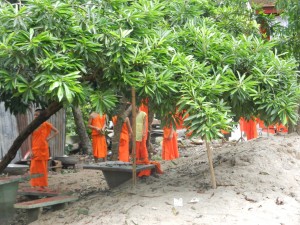
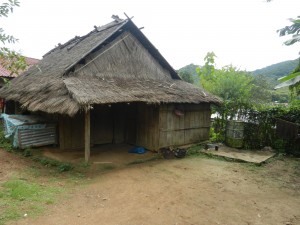
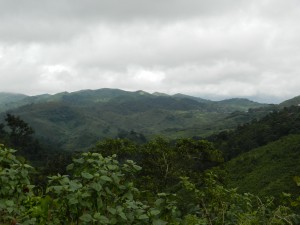
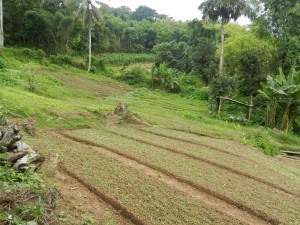
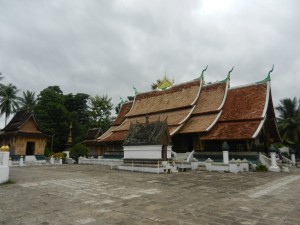
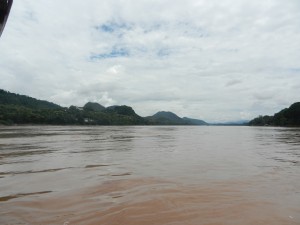
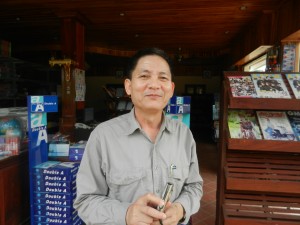
Comments on this entry are closed.